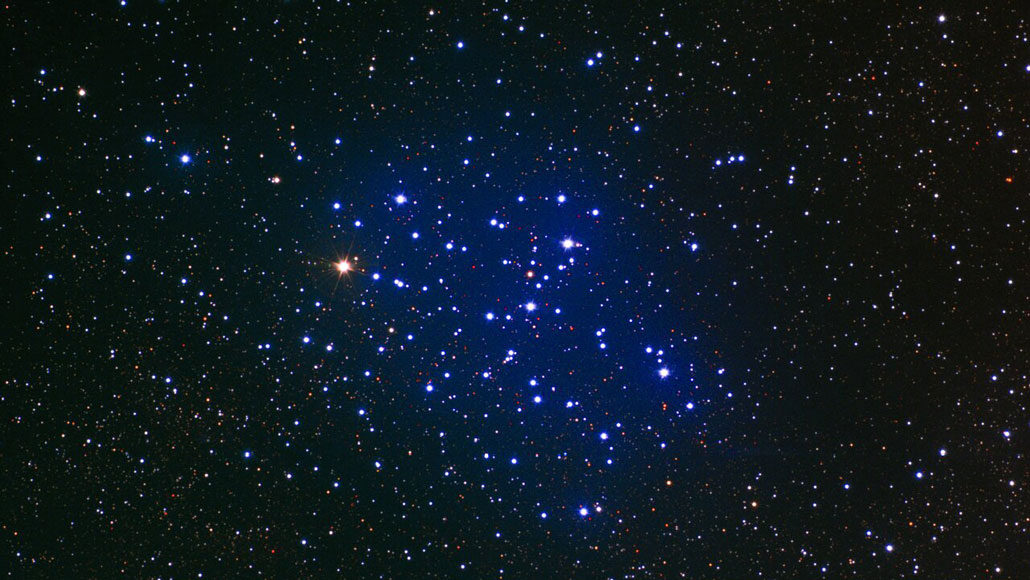algebra: A field of mathematics that describes a way to think about certain relationships that will involve numbers. And not just any particular number, usually, but abstract expressions involving numbers. For instance, instead of saying “1 + 2 = 3” or “3 – 1 = 2,” algebra gives each number a letter to take its place. So it now reads something like a “a + b = c” or “c - a = b.” But any number can substitute for those letters as long as the values on each side of the equal sign are still true. In other words, the a can be a 100 and b can be 101 as long as c = 201. Such expressions with different things on either side of an equals sign are known as algebraic equations.
astronomer: A scientist who works in the field of research that deals with celestial objects, space and the physical universe.
evolve: (adj. evolving) To change gradually over generations, or a long period of time. Nonliving things may be described as evolving if they change over time. For instance, the miniaturization of computers is sometimes described as these devices evolving to smaller, more complex devices.
fuel: Any material that will release energy during a controlled chemical or nuclear reaction. Fossil fuels (coal, natural gas and petroleum) are a common type that liberate their energy through chemical reactions that take place when heated (usually to the point of burning).
hydrogen: The lightest element in the universe. As a gas, it is colorless, odorless and highly flammable. It’s an integral part of many fuels, fats and chemicals that make up living tissues. It’s made of a single proton (which serves as its nucleus) orbited by a single electron.
life cycle: The succession of stages that occur as something grows, develops — and eventually ages and dies. The term can also be used to describe the sum of all processes involved in creating a product, starting with the extraction of raw materials and ending with the disposal of the product when it's no longer useful. Indeed, engineers describe this as the cradle-to-grave cycle of a product.
mass: A number that shows how much an object resists speeding up and slowing down — basically a measure of how much matter that object is made from.
orbital: Adjective for something relating to orbits. (in chemistry and subatomic physics) The pattern(s) of electrons (and their density) that form(s) within an atom or molecule.
physics: The scientific study of the nature and properties of matter and energy. Classical physics is an explanation of the nature and properties of matter and energy that relies on descriptions such as Newton’s laws of motion. Quantum physics, a field of study that emerged later, is a more accurate way of explaining the motions and behavior of matter. A scientist who works in such areas is known as a physicist.
planet: A large celestial object that orbits a star but unlike a star does not generate any visible light.
red supergiant: A very large star that develops after helium-fueled fusion reactions have ceased in the core of a very massive star (a star more than 15 times the mass of our sun).
solar system: The eight major planets and their moons in orbit around our sun, together with smaller bodies in the form of dwarf planets, asteroids, meteoroids and comets.
spectrum: (plural: spectra) A range of related things that appear in some order. (in light and energy) The range of electromagnetic radiation types; they span from gamma rays to X rays, ultraviolet light, visible light, infrared energy, microwaves and radio waves.
star: The basic building block from which galaxies are made. Stars develop when gravity compacts clouds of gas. When they become hot enough, stars will emit light and sometimes other forms of electromagnetic radiation. The sun is our closest star.
sun: The star at the center of Earth’s solar system. It is about 27,000 light-years from the center of the Milky Way galaxy. Also a term for any sunlike star.
supernova: (plural: supernovae or supernovas) A star that suddenly increases greatly in brightness because of a catastrophic explosion that ejects most (or sometimes all) of its mass.
theoretical: An adjective for an analysis or assessment of something that based on pre-existing knowledge of how things behave. It is not based on experimental trials. Theoretical research tends to use math — usually performed by computers — to predict how or what will occur for some specified series of conditions.
trait: A characteristic feature of something. (in genetics) A quality or characteristic that can be inherited.








